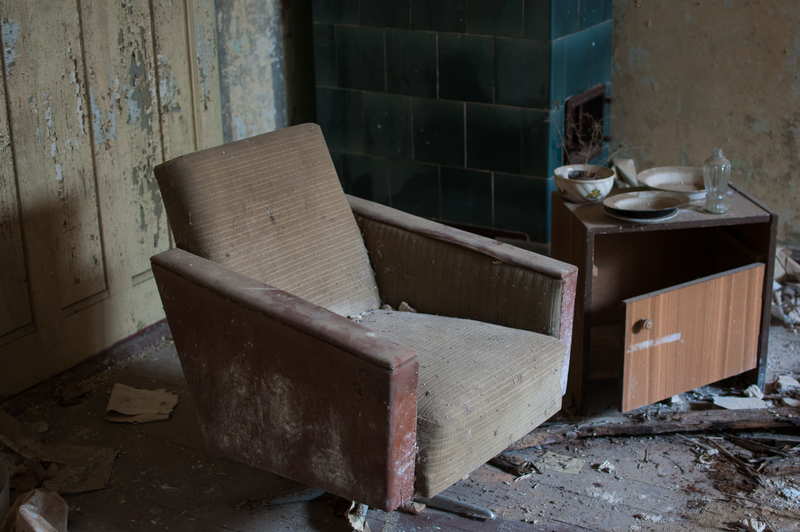Learn about how to remove mold from furniture fabric in this article. The three ways to eradicate mold would be using vinegar, bleach, and borax solutions.
Apart from the different solutions, we will also tackle how molds get into furniture fabric. Lastly, we’ll discuss its short and long-term effects.

Three Methods To Remove Mold From Furniture Fabric
The presence of mold in your furniture fabric has multiple downsides. One of which is health issues that range from skin allergies to upper respiratory tract problems. Knowing the harsh effects of mold, it is only natural to want to remove them.
Method #1. Vinegar
Vinegar has antibacterial power. Hence it is excellent in eradicating mold. In using vinegar, you have to dilute it with water. Both liquids should be mixed in equal parts.
After making your solution:
- Fetch a cloth and dip it in the mixture
- Do a spot test on your furniture fabric to ensure that it will not damage your material
- If it didn’t, continue wiping down the area with the solution
Wring the cloth and rinse it as you clean the furniture fabric. After removing the mold, wash the material with clean water to remove the lingering vinegar. Air-dry it under the sun so that the spores and the smell leave the fabric.
Method #2. Bleach
The second method is the most well-known method in eradicating mold. However, it is also notorious for fabric discoloration. Hence, you can only use bleach with white fabrics.
The composition of bleach — sodium hypochlorite — ensures that all mold spores are destroyed. Despite this, it is still necessary to dilute it because of its potency. You have to mix the bleach with water and a small amount of detergent with a 1:10:20 ratio.
The mixture would have one part detergent, ten parts bleach, and twenty parts of warm water. After creating the solution, dip a stiff-bristled brush on it, then scrub the fabric. After removing all of the molds, air-dry the material.
Method #3. Borax
Since bleach is potentially damaging to your furniture fabric, you can use borax instead. First, you have to vacuum the loose mildew from your material.
After vacuuming, make your borax solution by mixing ½ cup of borax with two cups of hot water. Don gloves and dip a clean cloth in the borax mixture. Wring the material, then rub it on the affected fabric.
Let the mixture from the cloth soak in the furniture fabric until the mold disappears. Lastly, rinse the whole thing with water.
How do molds get on furniture fabric?
To cut it short, mold and mildew are attracted to moist spaces. Generally, the mold that grows on fabric is the Aspergillus strain that is different from mold on walls or floors. The appearance of mold on the material can range from white to greenish-black, similar to mold on food.
The reason why your furniture fabric has mold is probably due to lack of ventilation or it was spread there. For example, if your walls are mold-contaminated, the furniture near the wall will likely be affected.
Mold spores are airborne, so it is not a surprise that furniture fabric away from the affected wall may still be contaminated with mold. Another reason would be that your furniture’s cover was not appropriately dried, leaving it damp. This, in turn, attracts mold.
If your furniture is water-damaged, then it is likely that your furniture fabric will be affected. Here’s an article on how to salvage your wood furniture from water damage to prevent mold growth.
You can detect mold from your material by its smell. The smell is usually musty and earthy.
Also, it would be hard to miss the white or black form that is present in your fabric. However, seeing the white or black growth on your fabric is a bad sign of longstanding mold problems.
Effects of mold on fabric
Experts have warned people about the harmful effects of mold. The short-term effects depend on your body’s response and the amount of mold. However, the long-term effects have no such discernment.
When you inhale the spores, it can cause respiratory problems. This may be a more severe problem for people with existing respiratory issues. Apart from these, mold can also cause allergies.
For the long-term effects, mold can weaken your immune system and make you susceptible to severe infections. Mold and mildew are hazardous for children, so here’s an article on how to prevent your stroller from acquiring mold.
Now that you know the short-term and long-term effects of mold assess the mold contamination in your home. Then, act accordingly. If the mold damage is extensive, contact a professional.
Conclusion
Mold on fabric is undoubtedly a cause of concern. However, you shouldn’t panic over it. Instead, you can do one of the ways on how to remove mold from furniture fabric that we’ve written above.
If the mold damage is too much or if you are particularly vulnerable to mold, you can contact a mold remediation company instead. Either way, we hope you’re well!
